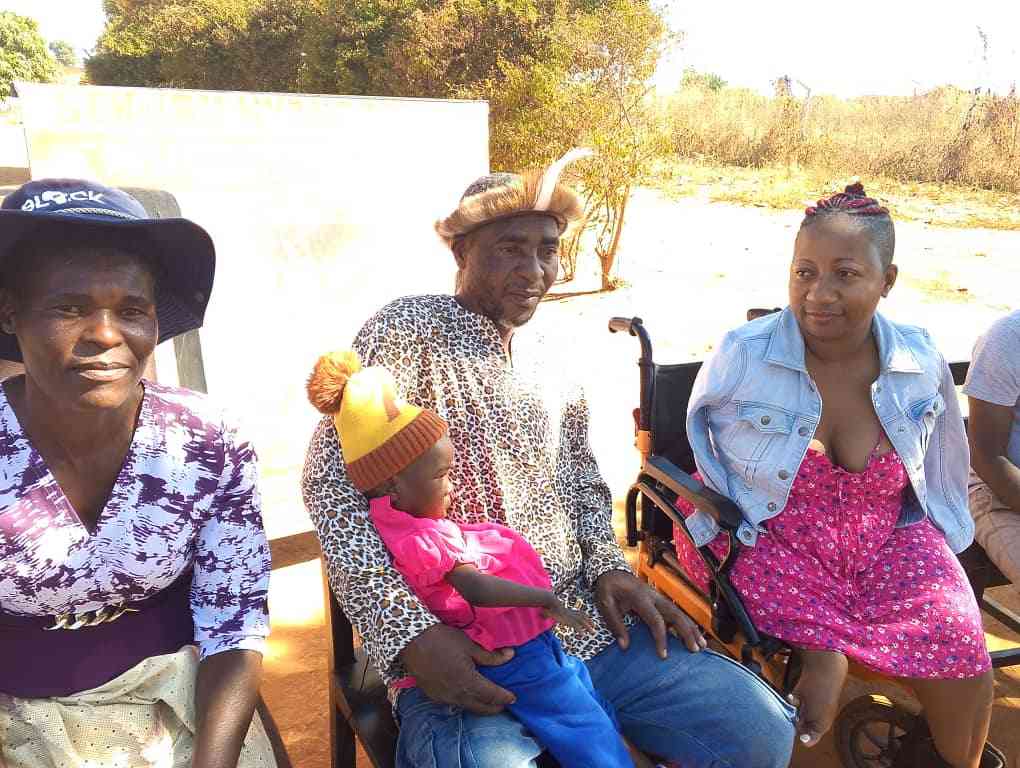
Mineral resource governance activist and environmentalist Kudakwashe Makanda recently took to social media platform Facebook to register his disgust over granite miners’ failure to develop the communities they are extracting black granite from.
environment By Kennedy Nyavaya

Located in the Mashonaland East province some 143km from Harare, the country’s capital, Mutoko is believed to be home to over 10 000 inhabitants and has been a hub for granite stones for over five decades.
While the precious stone, mainly used in construction, has decorated monuments and strengthened buildings, the people of Mutoko have not realised much joy from the mining activity and remain largely a poor population.
For Makanda, the recent commissioning of a “fancy” bus terminus shelter in Nyamakope in the area is an insult to a people living in abject poverty.
“The mining of black granite is more of a curse than a blessing to us the people of Mutoko,” wrote Makanda in a post accompanying the picture.
Mutoko is an agro-based community, with most peasant villagers farming tomatoes and being the biggest suppliers to the large markets like Mbare Musika.
According to Makanda, over the years the surface streams they largely rely on have been severely impacted by granite mining in the district.
- Chamisa under fire over US$120K donation
- Mavhunga puts DeMbare into Chibuku quarterfinals
- Pension funds bet on Cabora Bassa oilfields
- Councils defy govt fire tender directive
Keep Reading
“The mining of this rock results in the removal of parent underlying rock and this lowers the water table, therefore making farming difficult in the area. This means the economic livelihood of subsistence farming is gravely disturbed by this extractive industry,” he explained.
Apparently, some villagers have been displaced from their dwellings and farms to give way to mining and this has been done without the victims receiving any form of compensation.
The little infrastructure left has also further deteriorated as a result of big trucks making buildings crack in addition to open holes on the land, causing deaths and injuries to people and livestock.
“In Nyamakope village, there were reports of cattle and children that fell into the disused unfilled pits and they died. This means that the Chindenga-Nyamakope area has lost life and livestock because the mining companies are failing to fill the pits from where they would have mined the granite from,” he said.
A total of six companies mining in the area are reluctant to honour the Community Share Ownership Trust (CSOT), according to Makanda.
CSOTs are a government initiative to facilitate that communities benefit from their natural resources.
Through the ministry of Mines and Mining Development, government had set structures for the benefit of mining communities in addition to benefits for the nation as a whole.
There currently seems to be no firm laws on mining to dictate what companies are compelled to contribute to community development in their areas of operation so that they add value to their source of incomes.
Most of the few companies compliant to government’s CSOTs call have done so at a small-scale compared to their capacities.
“The CSOT on its own isn’t the antidote to this crisis. What is most important is for Parliament to pass the Mines and Minerals Amendment Bill instead of stalling like they are currently doing at the moment,” suggests Makanda, querying the logic of a bus stop at a road where cars and buses no longer move because of bad roads.
“Surely, can we say that all the hunger, poverty, unemployment, land and environmental degradation can be cured by a bus stop?”
Makanda added that responsibility was an alternative that will promote backward and forward economic linkages that can progressively have a positive socioeconomic impact on the district.
Environment Management Agency (EMA) postulates that “rivers in Mashonaland East and also the upper Mazowe catchment are highly-polluted due to alluvial mining activities.”
EMA is a statutory body responsible for ensuring the sustainable management of natural resources and protection of the environment, the prevention of pollution and environmental degradation, the preparation of environmental plans for the management and protection of the environment.
“Rivers have been reduced to rivulets mostly because of illegal mining as large tracts are dug up and large pits left each side of the river blocked with heaps of soil that can easily be washed away back into the river, causing siltation,” reads an article on their website.
In the recent past, the statutory body, which began operations in 2003 has not done enough in ensuring that capitalists, especially in the mining sector are accountable for their hazardous activities.
Many people and municipalities consider quarries to be eyesores and require various abatement methods to address problems with noise, dust, and other hazards they present.
The sustainability of mining has always been in question, although the operations cannot completely be halted as a result of resource need but there is debate that firms should account for their activity by providing development in communities.
In Mutoko, they are yet to realise the blessing of staying in a mineral-rich area as all they are currently faced with is mining activity making their lives harder by disturbing their farming efforts, presenting health hazards and dismantling the little infrastructure they have.











